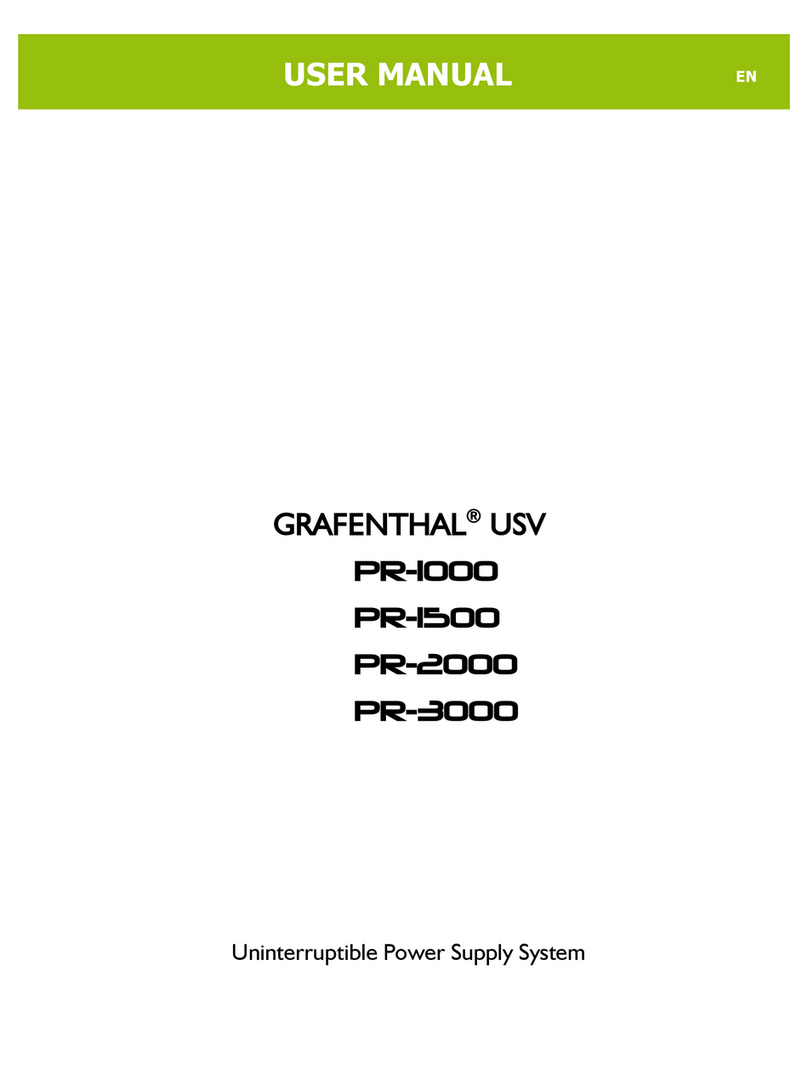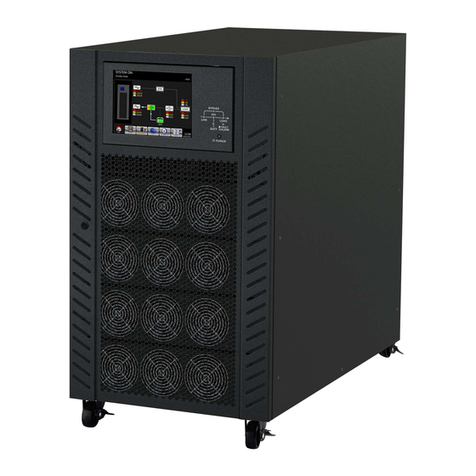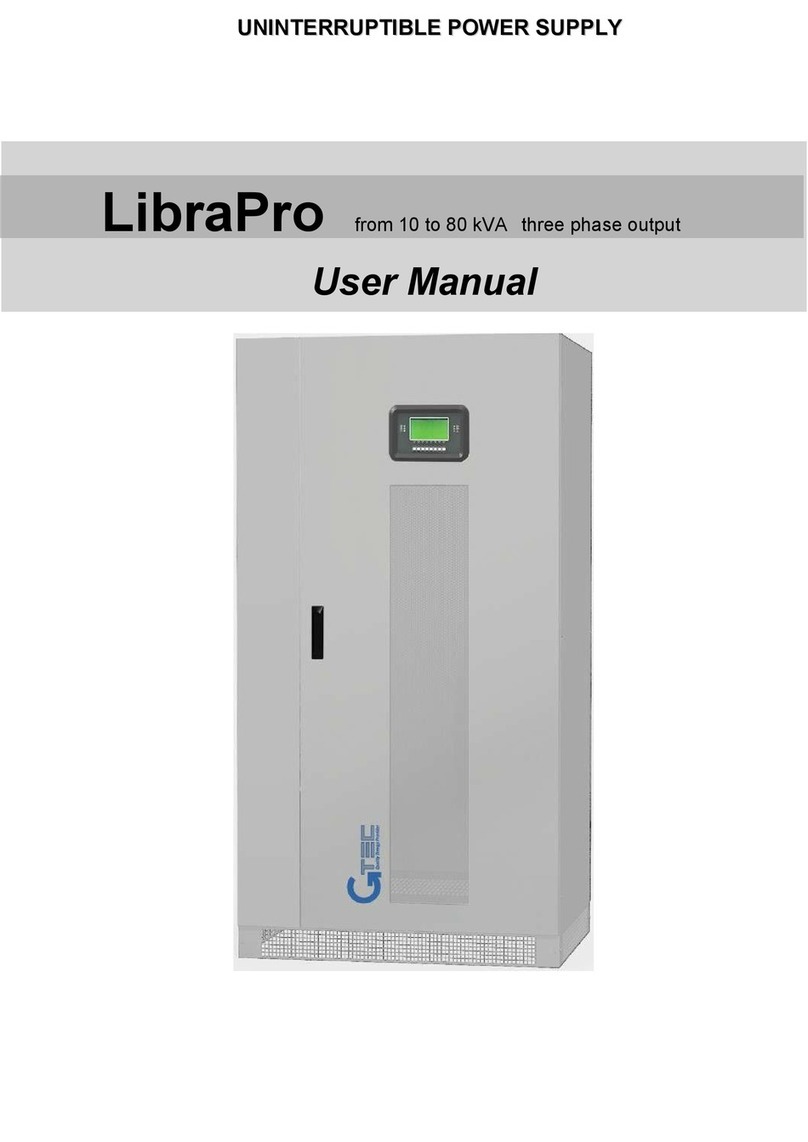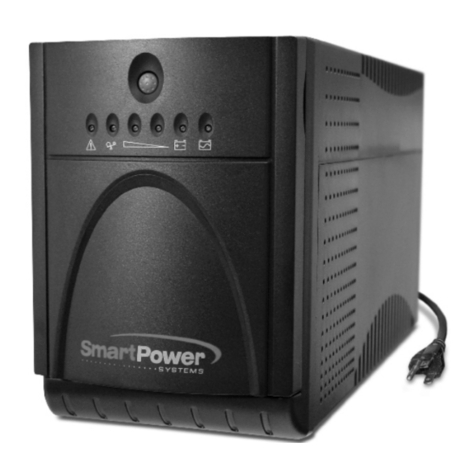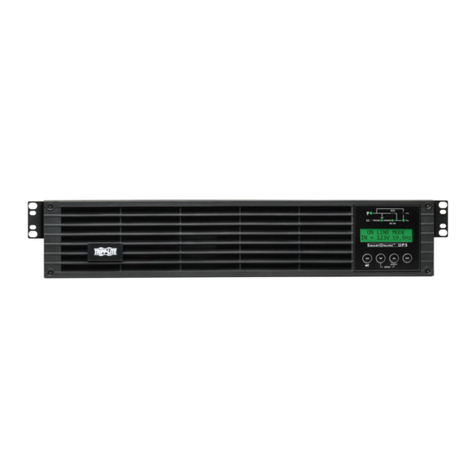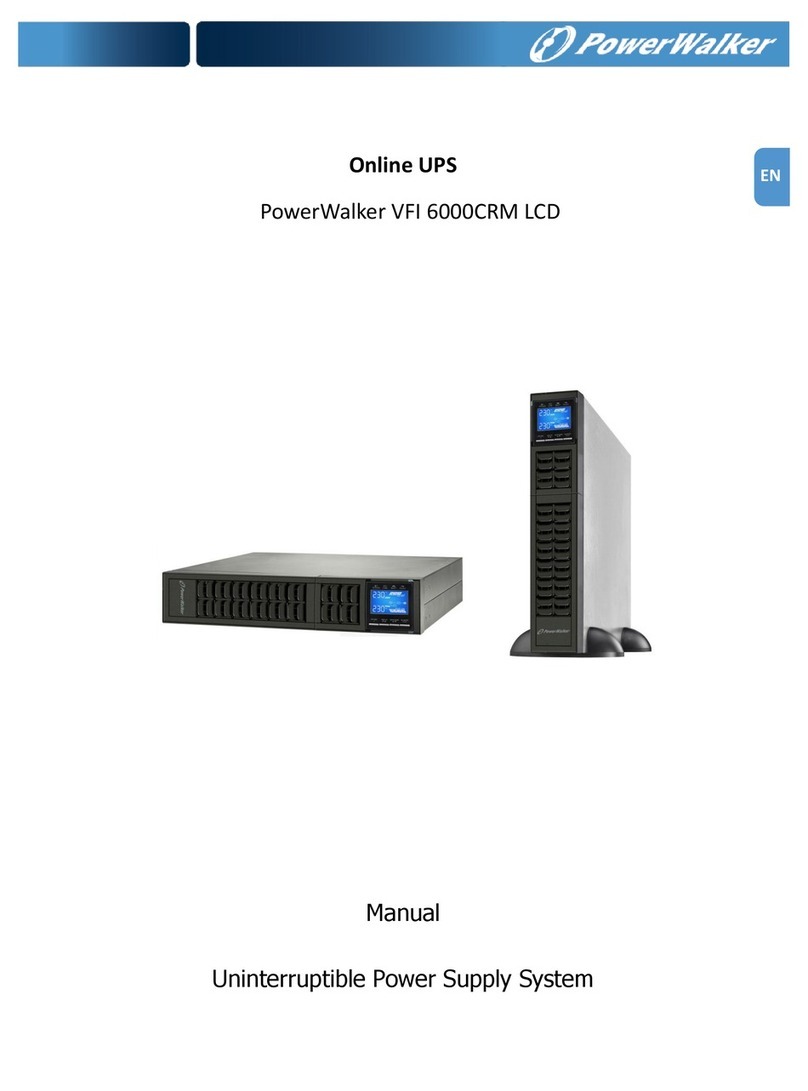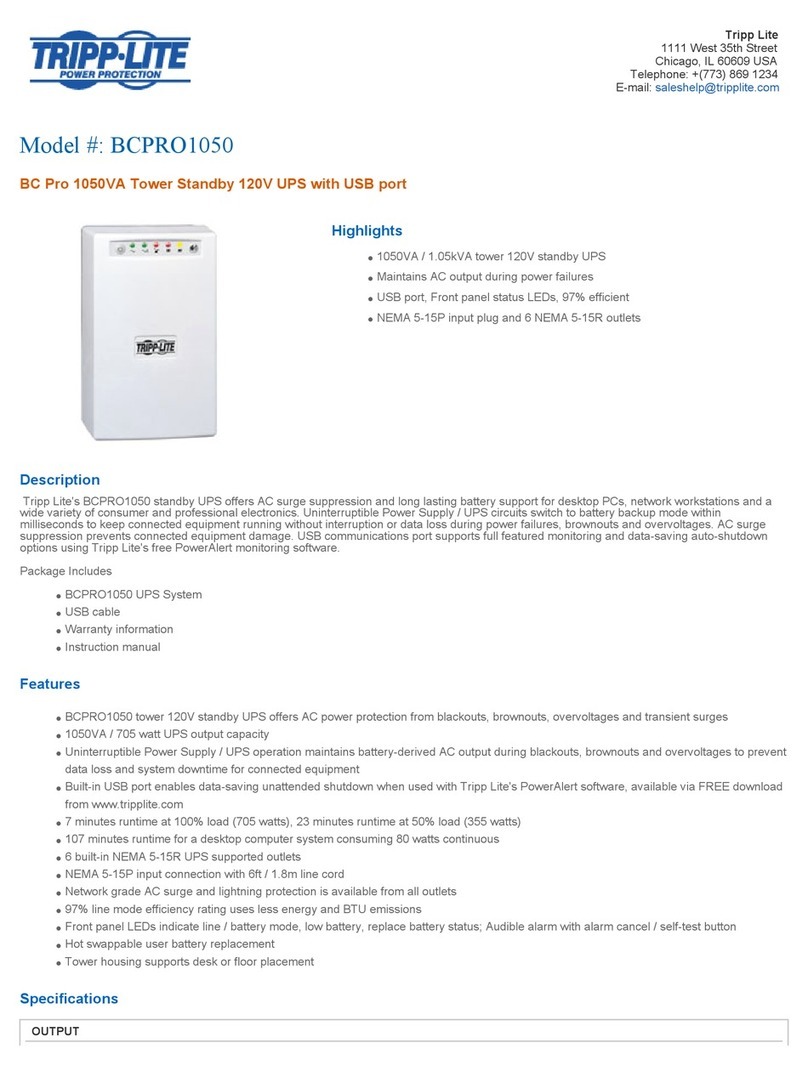Grafenthal USV PTR-6000 How to use

Service-Handbuch
GRAFENTHAL
USV PTR-6000
Copyright © 2016 GRAFENTHAL GmbH, Alle Rechte vorbehalten. GRAFENTHAL ist eine eingetragene Marke der GRAFENTHAL GmbH.

2
CONTENT
1. GENERAL INFORMATION .......................................................................................................................................4
1.1 GETTING START........................................................................................................................................................4
1.2 IMPORTANT SAFETY INSTRUCTIONS ........................................................................................................................4
2. ELECTRIC SPECIFICATIONS..................................................................................................................................5
3. FUNCTIONAL BLOCK...............................................................................................................................................7
4. WORKING PRINCIPLE OF THE MAJOR FUNCTIONAL BLOCK.....................................................................9
4.1 SWITCH POWER SUPPLY .........................................................................................................................................9
4.2 PFC/BOOSTER ........................................................................................................................................................9
4.3 INVERTER.................................................................................................................................................................9
4.4 CHARGER...............................................................................................................................................................10
4.5 EMI BOARD............................................................................................................................................................10
5. FUNCTION EXPLANATIONS FOR EACH PCB.................................................................................................. 11
5.1 SPS-CHARGER BOARD (POWER STAGE BOARD)................................................................................................. 11
5.2 CNTLBOARD (CONTROL BOARD).........................................................................................................................11
5.3 COMMUNICATION BOARD .......................................................................................................................................11
5.4 EMI BOARD............................................................................................................................................................ 11
5.5 MAIN POWER BOARD ............................................................................................................................................. 11
5.6 PARA(A)AND PARA(B) BOARD............................................................................................................................... 11
5.7 O/PRELAY BOARD.................................................................................................................................................12
6. INTERFACE...............................................................................................................................................................13
6.1 LED DISPLAY.........................................................................................................................................................13
6.2 LCD DISPLAY.........................................................................................................................................................13
6.3 LCD DISPLAY ICON................................................................................................................................................13
7. TROUBLE SHOOTING............................................................................................................................................16
7.1 LCD PANEL DISPLAY PATTERN DEFINITION ..........................................................................................................16
7.1.1 Trouble shooting for warning icon in LCD display.........................................................................................16
7.1.2 Trouble shooting for fault codes in LCD display.............................................................................................17
7.1.3 Trouble shooting..............................................................................................................................................18
7.2 REPAIR ...................................................................................................................................................................18
7.2.1 Basic Instruments and tools.............................................................................................................................19
7.2.2 Configuration of the Model Port on the Control Board ..................................................................................19
7.2.3 Configuration of the charger current on the charger Board ...........................................................................19
7.2.4 Configuration of the
charge voltage
on the charger Board...........................................................................19
7.2.5 Regulation of the system..................................................................................................................................20
7.2.6 Quick Start.......................................................................................................................................................21
8. TEST STEP................................................................................................................................................................23
9. APPENDIX .................................................................................................................................................................24
9.1 REFERENCE WAVEFORM .......................................................................................................................................24

3
9.2 BASIC COMMUNICATION COMMAND........................................................................................................................26
9.2.1 QGS.................................................................................................................................................................26
9.2.2 V<n>...............................................................................................................................................................27
9.2.3 V±<n>.............................................................................................................................................................27
9.2.4 BUSP±<n>......................................................................................................................................................27
9. 2.5 BUSN±<n> ....................................................................................................................................................28
9. 2.6 VB±<n> .........................................................................................................................................................28
9.2.7 QVFW..............................................................................................................................................................28
9.2.8 OC±<n>..........................................................................................................................................................28

4
1. General Information
1.1 Getting start
This manual is for Galleon II 6K(L)/10K(L) tower UPS. It can help service person perform the basic
maintenance and repair service.
This manual only focuses on the service section, so you should get the basic operation of the UPS from
the user manual, and make sure you had read and understood the user manual before reading the
manual.
The manual include 9 sections:
●General Information, this section shows you the general information of the service manual.
●Electric Specifications, this section shows you the basic electric specification of the UPS.
●Functional block, this section shows you the major functional block of the UPS.
●Working Principle of the Major Functional Block, this section shows you the working principle of
the major functional block.
● Function explanations for each PCB, this section explains you all the PCBs of the UPS system.
●Interface, this section shows you the LCD interface, including display and setting.
● Trouble Shooting, this section gives you the way to find the problems.
● Test Step, this section tells you how to test the UPS after you repair the unit.
● Appendix, this section shows you the basic waveforms for reference and the basic communication
commands.
1.2 Important Safety Instructions
For qualified service person only.
DO NOT perform any internal service or adjustment of this product unless the technical person is
well trained and experienced. .
Dangerous voltage exists at several points in this product. To avoid personal injury, don't touch
any exposed connections or components while UPS is on.
Turn off the UPS and switch off the input breaker before removing protective case.
AC voltage is always present if the input AC power is still available.
High voltage may exist at DC capacitors. Before removing the protective case, wait for at least
five minutes after turning off the UPS.
Verify input source (voltage and frequency) is within the maximum range before service.

5
2. Electric Specifications
MODEL
SPECIFICATION
6K
6KL
10K
10KL
Input
Input Voltage
176~300 VAC @ Full Load
110 VAC @ Half Load
Input Frequency
46~54 Hz for 50Hz system
56~64 Hz for 60Hz system
Input Power Factor
≥0.99
Input THD
<4%
Generator
Support
Output
Output Power (VA/Watt)
6000/6000( 20 pieces battery)
10000/10000( 20 pieces battery)
6000/5400( 18~19 pieces battery)
10000/9000(18~19 pieces battery)
6000/4800(16~17 pieces battery)
10000/8000(16~17 pieces battery)
Nominal Output Voltage
208/220/230/240VAC
Voltage Regulation
±1%
Output Frequency
Follows Bypass Frequency in Line Mode
(50/60+0.1) Hz in Battery Mode
Voltage Distortion
≤6% @ Full Nonlinear Load
≤2% @ Full Linear Load
Current Crest Ratio
3:1
Transfer Time
0ms @ Line Battery
0ms @ Inverter Bypass
<10ms @ Inverter ECO
Short Circuit Protection
Yes
Battery
Nominal Battery Voltage
240 VDC
Nominal Battery Quantity
20 pcs
Acceptable Battery Quantity
18~20 pcs
Type/Capacity
12V/7.2Ah
12V/9Ah
Backup Time
≥6minutes@full load
≥4minutes@full load
Efficiency
To Line Mode
>93%
To Battery Mode
>91%
To ECO Mode
>96%
Overload Protection
100%~110%
Alarm and Transfer To Bypass after 10min @ Line mode
Alarm and Cut Off Output after 30s @ Battery mode
110%~130%
Alarm and Transfer To Bypass after 1min @ Line mode
Alarm and Cut Off Output after 10s @ Battery mode
Over 130%
Alarm and Transfer To Bypass after 1s @ Line mode
Alarm and Cut Off Output after 1s @ Battery mode

6
Alarm and Cut Off Output after 1min @ Bypass mode
Auto Retransfer
Yes
Interface
RS232
Yes
USB 1.1
Yes
EPO
Yes
Environment
OperatingTemperature
0 ℃to 40℃
Humidity
<95% (No condensing)
Acoustic Noise
≤55dB
≤58dB
Standard
ESD
IEC 61000-4-2 Level 4
RS
IEC 61000-4-3 Level 3
EFT
IEC 61000-4-4 Level 4
Surge
IEC 61000-4-5 Level 4
Conduction
IEC/EN 62040-2 Category C3
Radiation
Safety
IEC62040-1-1
Drop
ASTM D5276-94
Vibration
ASTM D4728-87
Mechanical
Inlet
Terminal Block
Outlet
Terminal Block and Receptacle

7
3. Functional Block
As a true online UPS, the product applies a double conversion topology, comprising functional blocks as
shown in Figure 3.1
Figure 3.1 Function block Diagram
The CNTL block controls the action of the UPS system. It also provides the communication interface for
receiving and executing command from users via the panel or other communication protocol. When the
UPS becomes abnormal, in most case, the CNTL can provide basic information indicating the status of
the UPS.
The Rectifier and PFC blocks are the input stage of the UPS. The blocks convert AC input power into
two stable DC power stored in the BUS capacitor. In the meantime, PFC (Power Factor Correction) will
be executed and allows input current tracking the input voltage waveform. Therefore, the input power
factor will be corrected to 1 to achieve maximum efficiency and produce lowest power pollution to the
utility.
The PFC block in battery mode, also called Booster, is used to convert the low voltage DC power to
higher voltage with stable DC power, stored in the BUS capacitor.
The Inverter block is the output stage of the UPS and used to convert DC power from the BUS capacitor
to sine waveform output power.
When the utility is within the acceptable range, the UPS will provide power directly from the utility input
and the Rectifier and PFC will be executed at the same time.When the utility is outside of the acceptable
range, no matter it’s because of input voltage or input frequency, the UPS will shut down the Rectifier
and PFC functions and turn on the Battery Booster. In case of sudden interruption from input utility, the
controller can detect the interruption in very short time. During the short interval of detecting the
interruption, the output power will be provided by the power stored in the BUS capacitor. In this way,
there is no any interruption on output power.
The charger charges the battery when the UPS system is in online model. You can set the current from
1A to 4A by changing the jumper. And you also can choose a different voltage corresponding to different
battery pieces by changing the jumper on the CNTL board and the charger board.
The Input EMI section provides EMI filter function. The input EMI filters can prevent the UPS from being
interference by external electronic/magnetic noise which is generated by other electronic system and

8
prevent other systems from the noise generated inside the UPS system.
The SPS generates DC power supply needed by operation of the circuit of the UPS itself. The Bypass
provides a path that utility can power the output directly when the Inverter is not executed. The
Maintenance Bypass provides another path that utility can power the output directly when UPS is in
maintenance status.

9
4. Working Principle of the Major Functional Block
4.1 Switch Power Supply
The Switch Power Supply (SPS) supplies DC power for UPS operation. The input source of the SPS is
the grid when the grid voltage is higher than 110V . Or the input source of the SPS is the battery.
Figure 4.1 Basic circuit of power supply
Figure 4.1 is a flyback converter. When Q1 is on, all rectifier diodes (D1/D2/D3) are on open status and
all output capacitors (C1/C2/C3) supply currents to the load. The primary coil of the transformer will
become a pure inductor and the primary current will linearly increase to store energy in the coil. When
Q1 is off, primary current will stop and all rectifier diodes (D1/D2/D3) will turn to “close”status. It will
release the stored energy from the primary coil of the transformer to the secondary coil to supply loads.
At the same time, it will charge output capacitors including 15V, +12V, +5V, +12V(Fan), and HFPW.
The power of 12V, +5V supplies stable voltage to all kinds of ICs and other devices such as HCT. The
+12V (Fan) is supplied to fans and relays. The HFPWsupplies a high frequency power for the switch
(SCR/IGBT) driver and some other drive boards.
4.2 PFC/Booster
N
Q1
Q2
UBUS+
UBUS-
Utility
Battery
L1
D2
D1
C1
C2
N
L2
Q3
Q4
Q5
Figure 4.2 PFC/Booster
As shown in the Figure 4.2, when Q1/Q2 is on and D1/D2 is off, the current will increase to store energy
in choke(L1/L2). When the Q1/Q2 is off and D1/D2 is on, the choke will release energy. Therefore, we
can control the current in chokes (input current) by regulating the time of Q1/Q2 on and off.
4.3 Inverter
The input of the three level inverter topology is two DC voltages, and the output is an AC voltage, as
shown in the Figure 4.3. When Q1/Q2 is on and Q/Q3 is off, the voltage of the bridge midpoint is +BUS.
When Q1/Q2 is off and Q3/Q4 is on, the voltage of the midpoint bridge is –BUS. We can get any voltage
waveform between ±BUS voltage from LC filter output by regulating the duty cycle of Q1/Q2/Q3/Q4,
including sine wave form.

10
Figure 4.3 Three level inverter bridge
4.4 Charger
The function of charger is to charge and maintain the batteries at fully charged condition. The charger
charges the batteries with a constant current at initial stage. At the same time, the battery voltage keeps
increasing until reaching the constant charge voltage point. Then, the charge current will decrease
accordingly, now it’s in second stage. After one hour of constant voltage charging, the charge voltage will
change to floating charge voltage, in general, the charger will control the output voltage at a constant
level (13.65V±1% per battery) to optimize battery recharge time and prolong the lifetime of batteries
without overcharging.
Figure 4.4 Topology of the charger
Note: There are two kinds of chargers for standard model UPS and long-run model UPS. They both
apply the same principle, but there is on difference in charger output capacity.
4.5 EMI Board
Input EMI board is connected between utility and the input of rectifier.
CX
CY
CY
CY
CY
CX
Input Output
Common
Choke
Figure 4.5 Topology of the EMI

11
5. Function explanations for each PCB
Table 5.1 PCB information of Galleon 6~10k
Item
PCB Name
PCB serial number
Quantity
Remark
1
SPS-Charger
6k
71-302390-XXG
1
For 6kVA model
10k
71-301757-XXG
1
For 10kVA model
2
CNTL
71-301569-XXG
1
3
Communication
71-302389-XXG
1
4
EMI
6K
71-302448-XXG
1
For 6kVA model
10K
71-302408-XXG
1
For 10kVA model
5
Main Power
6K
71-302114-XXG
1
For 6kVA model
10K
71-301756-XXG
1
For 10kVA model
6
Para(A)
71-302096-XXG
1
Para(B)
71-302097-XXG
1
7
O/P Relay
71-300026-XXG
1
Note: “XX” in the serial number is the version of the PCB. It may be modified according to releasing
version in the future.
5.1 SPS-Charger board (Power Stage Board)
The PSDR board consists of SPS. It gives the whole UPS system power supply.
You can set the current from 1A to 4A by changing the jumper. And you also can choose a different
voltage corresponding to different battery pieces by changing the jumper on the CNTL board and the
Charger-Charger board. The charge voltage is controlled by CNTL board.
5.2 CNTL board (Control Board)
The CNTL board is the core of the UPS system. It controls the actions of the semiconductors and other
mechanical switches, the display of the LED/LCD, the sound of the buzzer, the communication with the
computer, and other important tasks.
5.3 Communication board
The Communication board provides RS232/USB interface to the users, and it also provide one EPO port
to cut off the output immediately.
5.4 EMI board
The EMI board can prevent the UPS from external electronic/magnetic noise generated by other
electronic systems, and also prevent other systems from the noise generated inside of the UPS system.
And the MOV is also on the EMI board which can absorb the surge to protect the UPS system.
5.5 Main Power board
The Main Power board is the most expensive and biggest PCB in the UPS. It converts the AC/DC power
to a pure sine waveform. And then it converts the DC/AC power. There are many semiconductors and
easy-failure components on the board, so it’s required to pay more attention when UPS is abnormal.
5.6 Para(A) and Para(B) board
The Para(A) board and Para(B) board is used for parallel communication when the UPS system is

12
running in parallel mode.
5.7 O/P Relay board
The O/P Relay board should be installed for parallel system. For single system, it can be removed.
The board can disconnect the UPS from the output (parallel system).

13
6. Interface
6.1 LED Display Table 6.1 LED Display
Mode LED
Bypass
Line
Battery
Fault
UPS Startup
●
●
●
●
No Output mode
○
○
○
○
Bypass mode
●
○
○
○
AC mode
○
●
○
○
Battery mode
○
○
●
○
CVCF mode
○
●
○
○
Battery Test
●
●
●
○
ECO mode
●
●
○
○
Fault
○
○
○
●
Note: ●means LED is lighting, and ○means LED is faded.
6.2 LCD Display
Figure 6.1 LCD Display
6.3 LCD Display Icon
Display
Function

14
Backup time information
Indicates the backup time in pie chart.
●Indicates the backup time in numbers.
H: hours, M: minutes, S: seconds
●When UPS is in Bypass mode, these two numbers indicating the power
capacity; 06 for 6K model and 10 for 10K model.
Fault information
Indicates that the warning and fault occurs.
Indicates the fault codes, and the codes are listed in details in section 7-1.
Mute operation
Indicates that the UPS alarm is disabled.
Output & Battery voltage information
Indicates the output voltage, frequency or battery voltage.
Vac: output voltage, Vdc: battery voltage, Hz: frequency
Load information
Indicates the load level by 0-25%, 26-50%, 51-75%, and 76-100%.
Indicates overload.
Indicates the load or the output is short.
Programmable output information
Indicates that the programmable outputs are working.
Mode operation information
Indicates the UPS connects to the utility.
Indicates the battery is working.
Indicates the bypass circuit is working.
Indicates the ECO mode is enabled.
Indicates the Inverter circuit is working.
Indicates the output is working.
Battery information
Indicates the Battery capacity by 0-25%, 26-50%, 51-75%, and 76-100%.
Indicates the battery is fault.
Indicates low battery level and low battery voltage.
Input & Battery voltage information

15
Indicates the input voltage or frequency or battery voltage.
Vac: Input voltage, Vdc: battery voltage, Hz: input frequency

16
7. Trouble Shooting
This section describes how to find the troubles when UPS is abnormal. We suggest you to follow the
service procedure below:
1. Check the UPS status via LED and LCD display, the sound of the buzzer, or listen to the
description of end users.
2. Inspect failure board for static checking.
3. Replace failure components.
4. Static checking.
5. Power-on checking.
6. Test after repair.
Following section will help service person to solve the most problems.
7.1 LCD Panel Display Pattern Definition
7.1.1 Trouble shooting for warning icon in LCD display
Any warning display implies some abnormity happened to the UPS, indicating that some situation that
may endanger the reliability of the UPS has occurred, but these situations don’t immediately lead to
interruption of power supply.
LCD icon (Flashing)
Alarm
Possible cause
Action
1 Beeping / second
Low battery
Check the battery voltage
2 Beeping / second
Over load
Check the loads
1 Beeping / second
Battery disconnected
Check the battery wiring
1 Beeping / second
Battery/Charger voltage too high
Check the output voltage of the
battery and the charger
1 Beeping / second
EPO plug or cable not connected
Check the EPO plug and EPO cable
1 Beeping / second
Fan failure, or high internal
temperature
Check the fans, loads, ventilation,
ambient temperature
1 Beeping / second
Charger broken or low output
voltage
Check the charger
1 Beeping / second
I/P fuse broken
Check the I/P fuse
1 Beeping / second
Overload 3 times in 30min
Check the loads
Note:When the UPS alarms, the UPS is still working on the original mode.

17
7.1.2 Trouble shooting for fault codes in LCD display
When the UPS is fault, it will transfer to Fault mode.
Code
LCD
icon
Fault Event
Description
Action
01
None
BUS soft start
failure
When the bus voltage can’t
reach the setting value in
30s, the fault signal will be
displayed.
Check if power components such as IGBT and
SCR for the PFC and the utility power SCR are
well. Meanwhile, check if the components on
the drive circuit are well.
02
None
BUS voltage high
When one of the following
conditions occurs, the fault
signal will be displayed.
1. +Bus voltage keeps
higher than 450V or
the –BUS voltage keeps
lower than –450V for more
than 50 ms.
2. +Bus voltage keeps
higher than 400V or
the –BUS voltage keeps
lower than –400V for more
than 1.5s.
Maybe the PSDR board is damaged;
Check if power components such as IGBT and
SCR for the PFC and the utility power SCR are
well. Meanwhile, check if components on the
drive circuit are well.
03
None
BUS voltage low
When +Bus voltage keeps
lower than 230V or
the –BUS voltage keeps
higher than –230V for more
than 200ms, the fault signal
will be displayed.
Maybe the PSDR board is damaged.
Check if power components such as IGBT and
SCR for the PFC and the utility power SCR are
well. Meanwhile, check if components on the
drive circuit are well.
04
None
BUS voltage
unbalance
When the difference
between the ±Bus voltage
absolute value keeps more
than 40V for 2 minutes, the
fault signal will be sent.
Maybe the PSDR board is damaged.
Check if power components such as IGBT and
SCR for the PFC and the utility power SCR are
well. Meanwhile, check if components on the
drive circuit are well.
05
None
BUS short
circuited
When bus voltage drops to
32V in a period and the
situation occurs for more
than two periods, the fault
signal will be displayed.
Check all the components on power board.
11
None
INV soft start
failure
Inverter voltage can’t reach
the setting value in 30s.
Check the inverter drive circuit.
12
None
INV voltage high
When INV voltage keeps
higher than 276V for 128
ms, the fault signal will be
displayed.
Check if power components in power INV and
on the drive circuit are normal. Check if IGBT
protective circuit and some PFC components
are normal.
13
None
INV voltage low
When INV voltage keeps
lower than 140V for 128
ms, the fault signal will be
displayed.
Maybe the PSDR board is damaged;
Check if power components in power INV and
on the drive circuit are normal. Check if IGBT
protective circuit and some PFC components
are normal.
14
Output short
circuited
When INV output voltage
keeps lower than 50V and
output current keeps lower
than 20A for over 3 periods,
the fault signal will be
displayed.
Remove all the loads. Turn off the UPS. Check
whether the output of UPS and loads are short
circuited. Make sure the short circuit is
removed, and the UPS has no internal faults
before turning on again.
1A
None
Negative power
fault
When the output power on
the INV terminal is over
-800W, the fault signal will
be displayed.
Check if input and output connections are
correct. And then check if INV relay RY5 or
STS(Q13, Q14, Q20,Q25 and their driver
circuits) are OK.
21
None
Battery SCR short
circuited
When battery voltage is
more than 310V, the fault
signal will be displayed.
It is probably the charger or PSDR board
damaged.
Check if the battery SCR(Q21)or the battery
relay (RY3, RY4) on the PSDR board are well. If
PSDR board is ensured ok after checking, it
may indicate there is something wrong with
charger output.
Check if components for the battery drive

18
signals are normal. Check circuit of the utility
power SCR part.
24
None
INV relay short
circuited
After Bus soft start
completes and INV PWM is
off, more than 50V INV
voltage is detected, the
fault signal will be
displayed.
Check if INV relay RY5 on PSDR board is OK.
35
None
Parallel cable
failure
When the parallel
communication between
the UPSs is interrupted, the
fault signal will be
displayed.
Check the parallel cables between the UPSs
are normal, and the cable between the parallel
board and the control board are normal.
36
None
Current un-sharing
When sharing current is
greater than 5Aand sharing
current is greater than
5*ILoad or the share
current less than 5A and
greater than the ILoad+4A
in UPS parallel system, the
fault signal will be
displayed.
Check the share current cable are normal, and
make sure the output be connected together.
41
None
over temperature
Check if UPS is overloaded, air vents are
blocked, and ambient temperature is over 40℃.
After overload or block is removed, please keep
UPS cool down for 10 minutes before turning on
again.
It is not recommended to operate the UPS
under over 40°C temperature environment.
42
None
Internal fault
CPU can not build
communication and the
control board is damaged.
Replace the CNTL board.
43
Overload
Check the loads and remove some non-critical
loads.
Check whether some loads are failed.
7.1.3 Trouble shooting
Problem
Possible cause
Action
Battery backup time is
shorten
Battery not yet been fully charged.
Keep UPS connected to utility power persistently
for more than 10 hours to recharge the batteries.
UPS overload.
Check the loads and remove some non-critical
loads.
Battery aged.
Replace the batteries.
Charger fails
Replace the charger.
The UPS cannot power
on after pressing the
button
The button is not pressed and hold
long enough
Press the button continuously for more than 0.5s.
Battery is not connected or battery
voltage is too low, or charger fails.
Check the charger and battery.
UPS failure.
Repair the UPS.
7.2 Repair
In this section, some debug skills are listed to help you finding the failed components and problems as
soon as possible. Before proceeding the following steps, we strongly suggest to read previous section
for trouble shooting first. Then check the components listed in section 7.2.4 to find out which block fails.

19
7.2.1 Basic Instruments and tools
1、One computer with RS232 port and one standard RS232 cable;
2、Wire cutters and clamps;
3、One electric soldering iron;
4、One multimeter;
5、One oscilloscope(voltage and current probe needed);
6、Diagonal pliers, snipe nose pliers, cross screwdrivers (150mm/75mm length), flat screwdrivers
(75mm length) and PVC insulating tapes etc;
7、Make-self tools including Balance voltage test equipments, current limiting resistors, tubes and
clamp terminals with different specifications;
7.2.2 Configuration of the Model Port on the Control Board
The Model Port (JP1) on the CNTL board should be configured as follows:
Table 6.1 Model Port Setting List
Model Type
pin1&pin2
pin3&pin4
Battery Number
pin5&pin6
pin7&pin8
pin5&pin6
6K
0
1
16
1
0
0
6KL
0
0
17
0
1
1
10K
1
1
18
0
1
0
10KL
1
0
19
0
0
1
20
0
0
0
Note:“1” indicates that the jumper is connected;
“0”indicates that nothing is connected
7.2.3 Configuration of the charger current on the charger Board
The Model Port on the Charger board should be configured as follows:
Table 7.3 Charger current Setting List
Charge current (A)
JP06
JP07
JP08
1A
0
0
1
2A
0
1
0
3A
1
0
0
4A
0
0
0
Note:“1” indicates that the jumper is connected;
“0”indicates that nothing is connected
7.2.4 Configuration of the charge voltage on the charger Board
Modify charger voltage according to below table to meet the setting number in control board. There are
jumpers on the charger board. Please refer to the below table to modify charger voltage.
Table 7.4 Charge Voltage Setting List
Battery Number
in series
Charge
voltage (V)
JP01
JP02
JP03
JP04
JP05
16
218
0
0
0
1
0
17
232
0
0
1
0
0
18
245
0
1
0
0
0

20
19
259
1
0
0
0
0
20
273
0
0
0
0
0
Note:“1” indicates that the jumper is connected;
“0”indicates that nothing is connected
7.2.5 Regulation of the system
Parameter Setting Method:
1. Connect the RS232 port of the UPS to the RS232 port of the computer with RS232 cable.
Choose the “Start>>Program>>Accessory>>Communication>>Hyper terminal” and start Hyper
terminal application. Set the COM port for “COM1” and the other setting as Figure 7.1.
Communication protocol setting
Display setting
Figure 7.1 Hyper terminal setting
Table of contents
Other Grafenthal UPS manuals
Popular UPS manuals by other brands

Tripp Lite
Tripp Lite 120V AC owner's manual
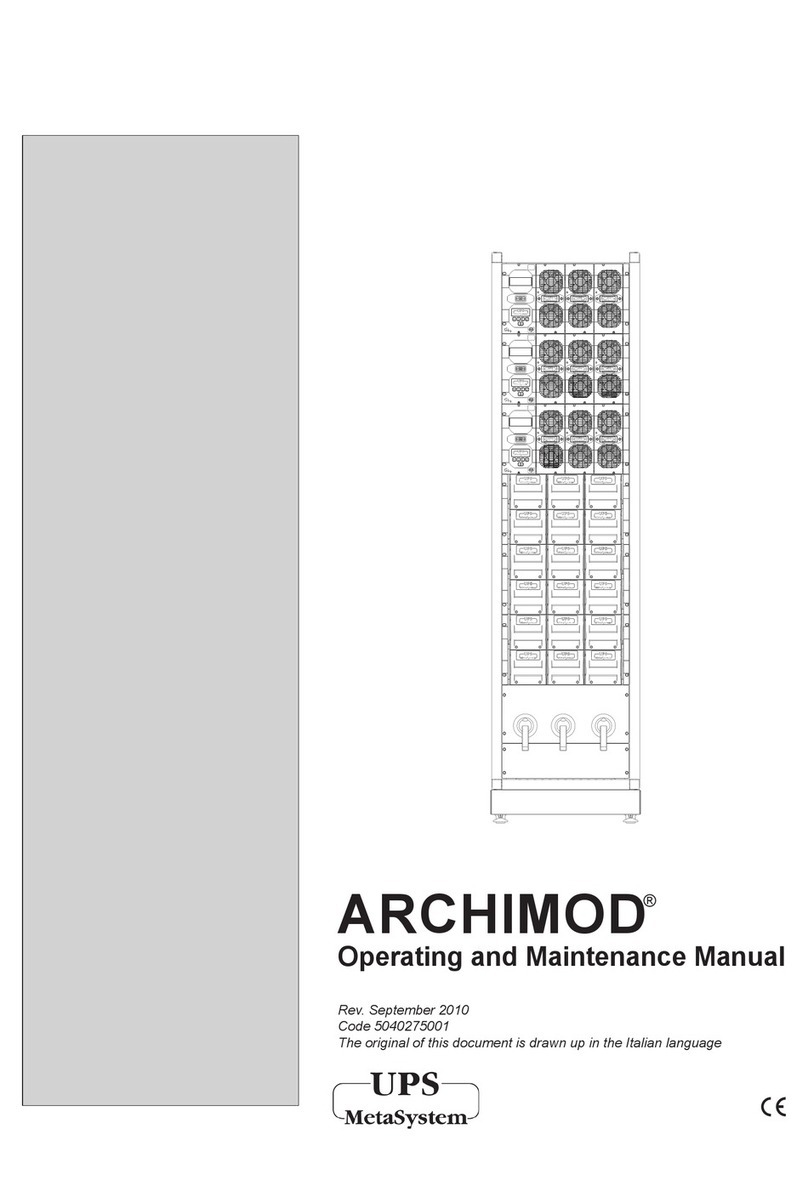
MetaSystem
MetaSystem ARCHIMOD 20 Operating and maintenance manual
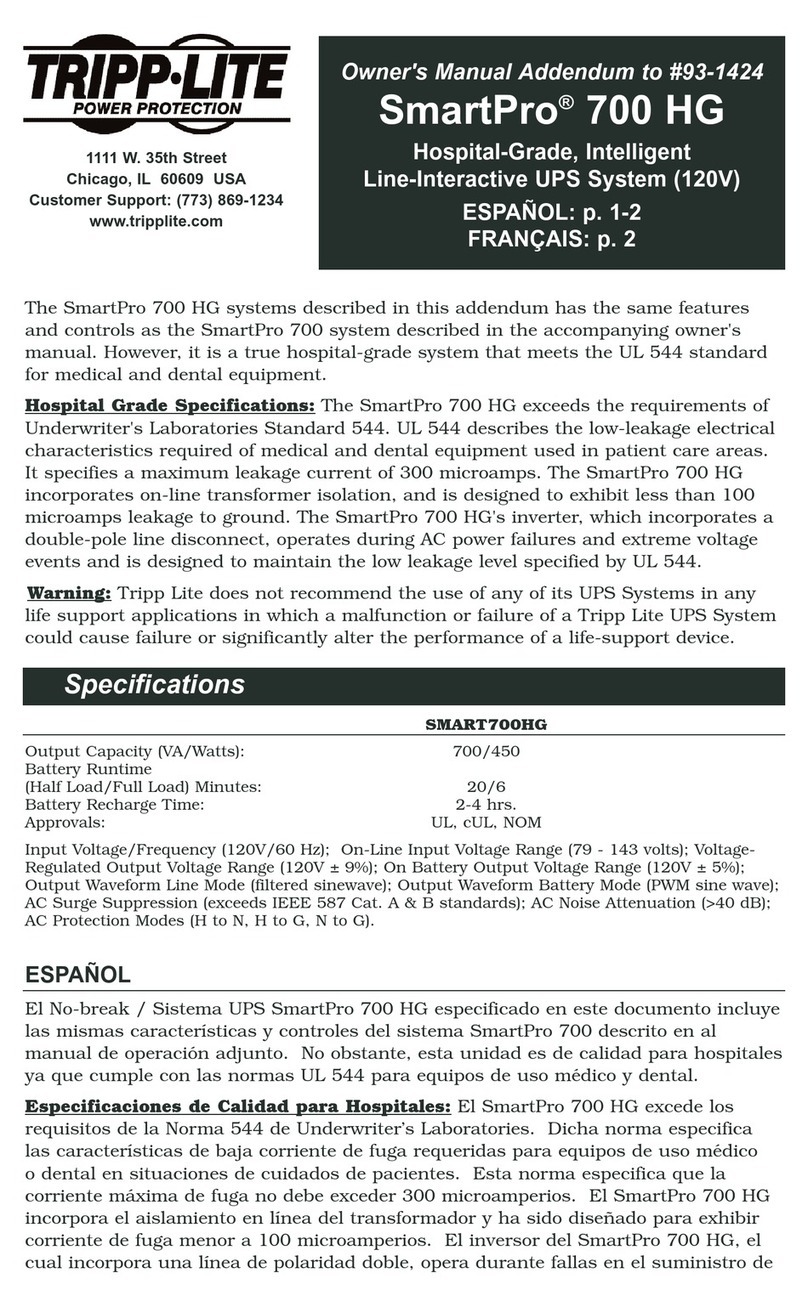
Tripp Lite
Tripp Lite SmartPro 700 HG Owner's manual addendum
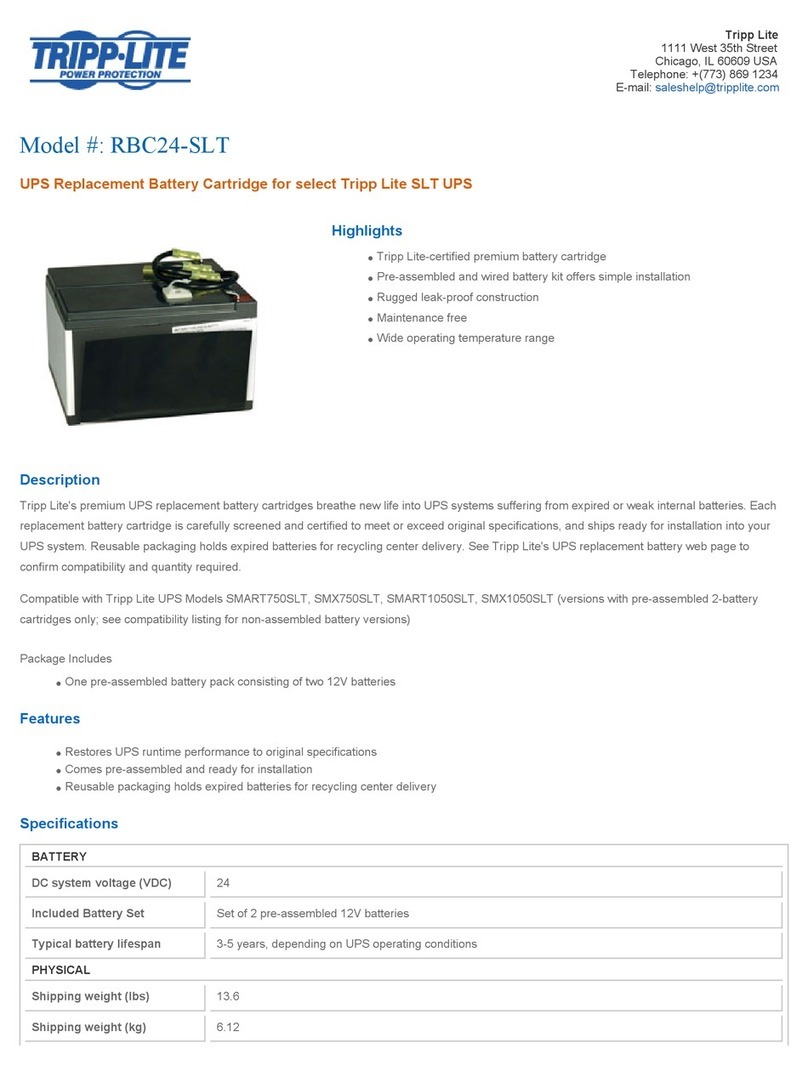
Tripp Lite
Tripp Lite RBC24-SLT Specification sheet
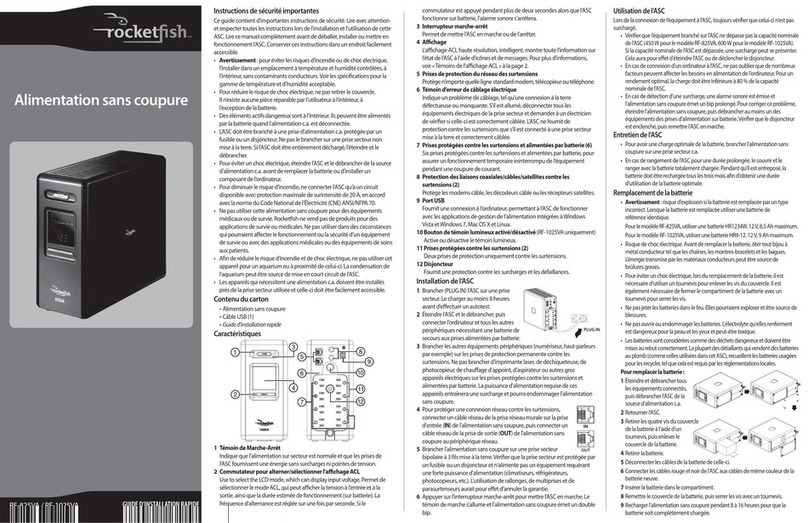
Rocket Fish
Rocket Fish RF-1025VA Quick setup guide
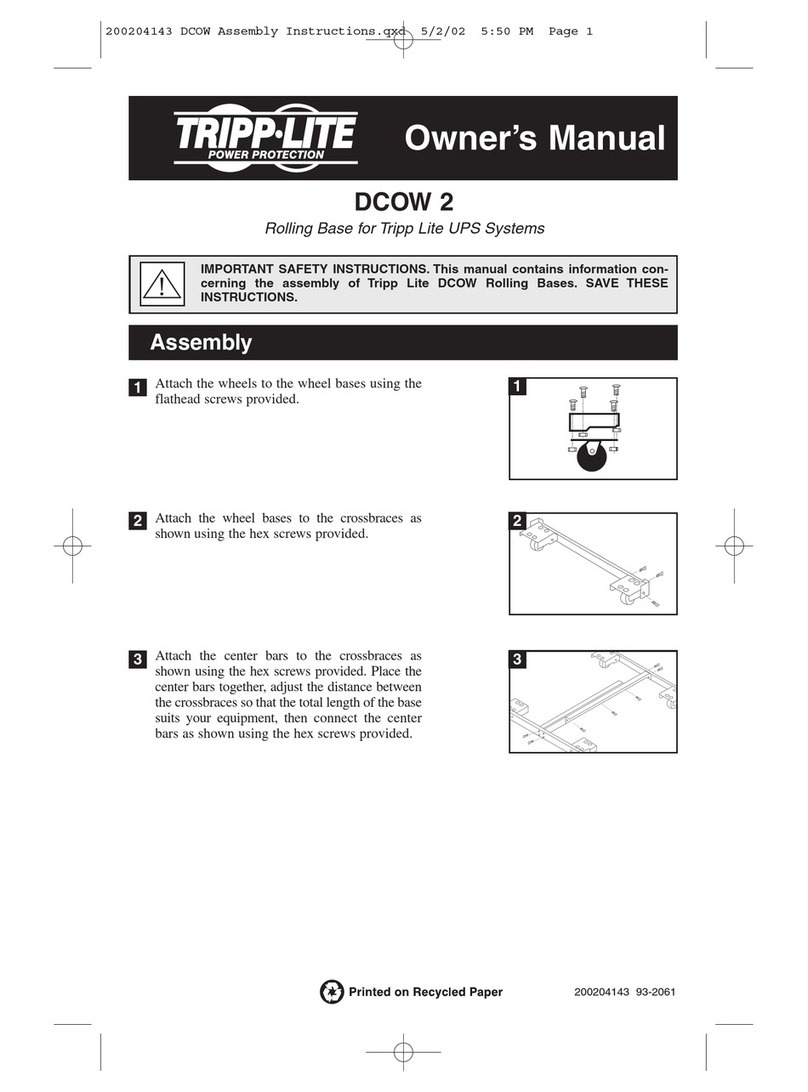
Tripp Lite
Tripp Lite DCOW 2 owner's manual
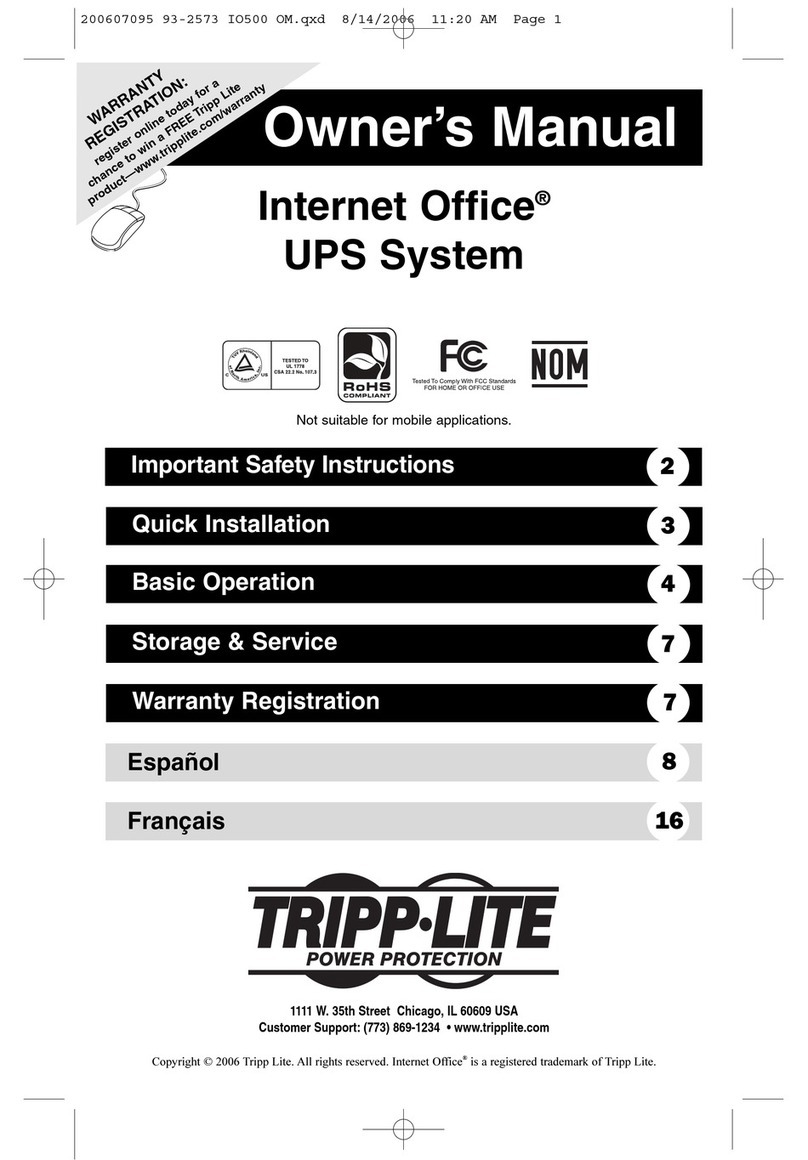
Tripp Lite
Tripp Lite Internet Office owner's manual
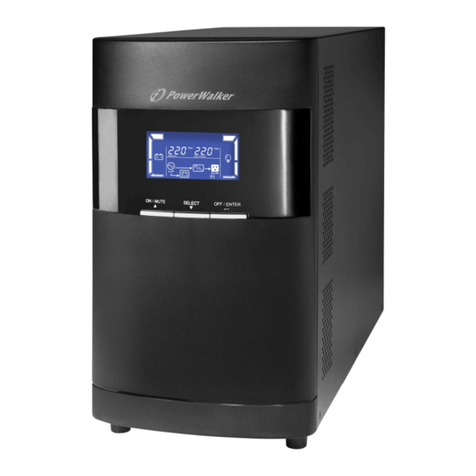
PowerWalker
PowerWalker VFI 3000 LCD Technical details
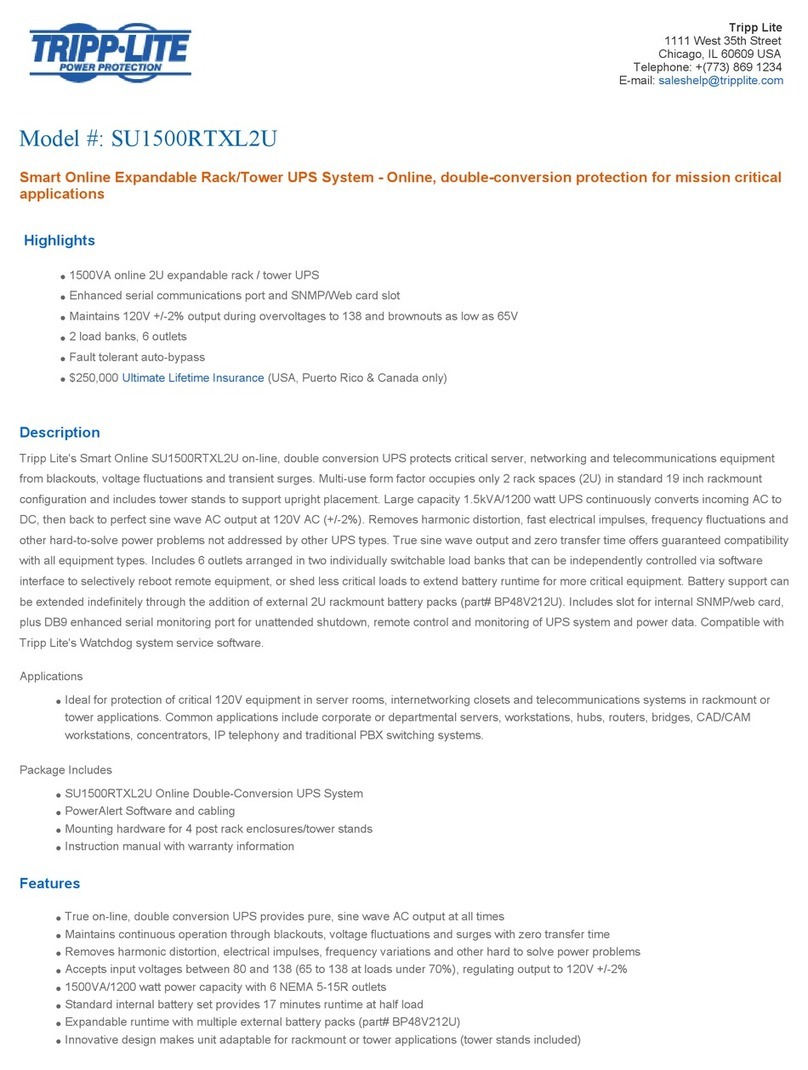
Tripp Lite
Tripp Lite SmartOnline SU1500RTXL2U Specifications
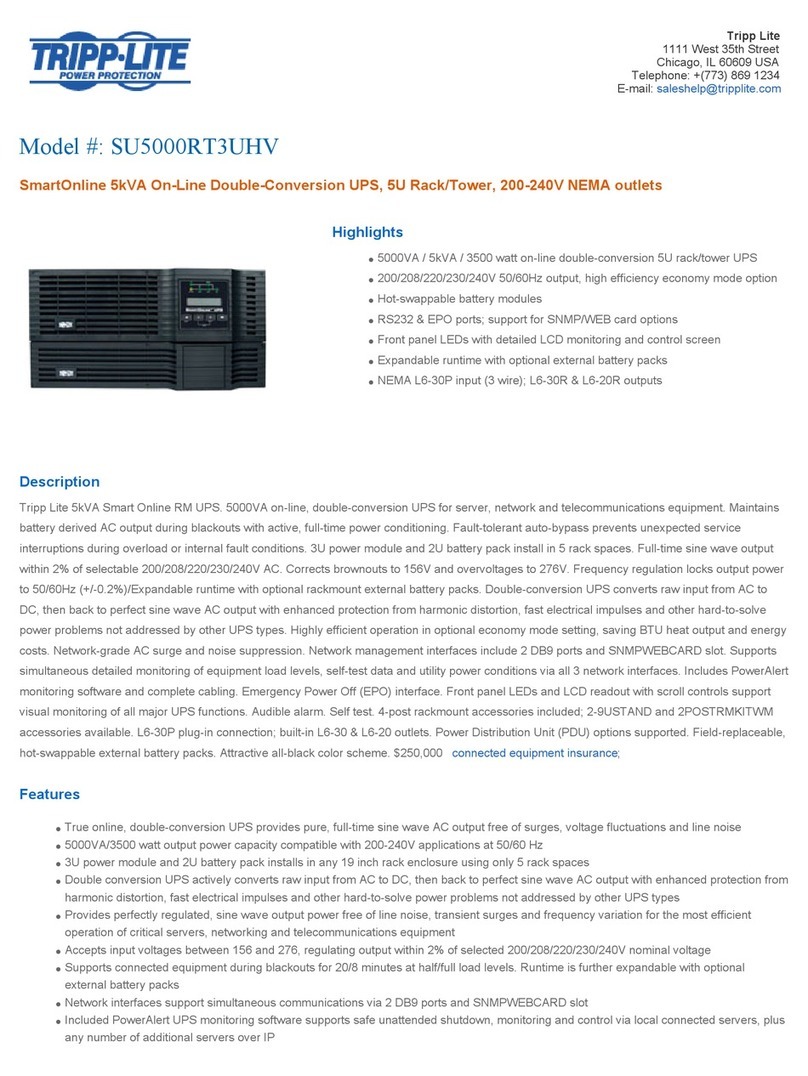
Tripp Lite
Tripp Lite SmartOnline SU5000RT3UHV Specifications
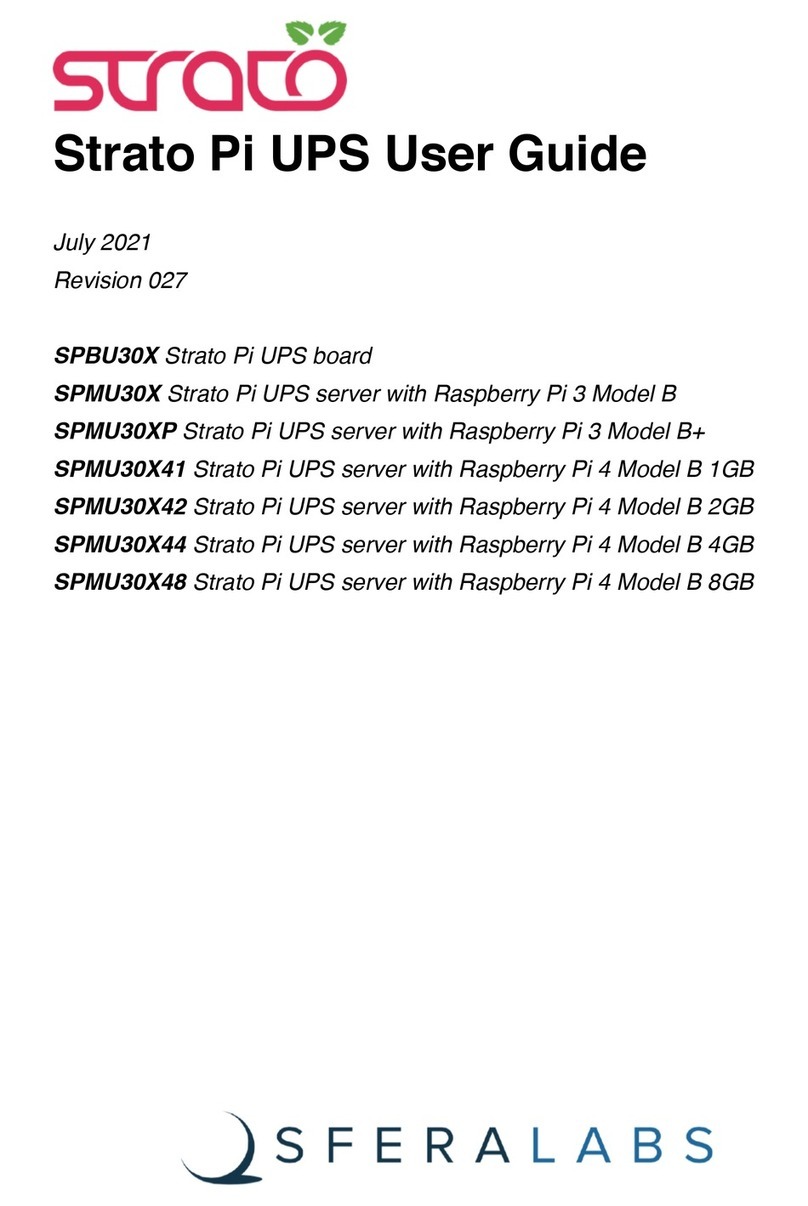
Sferalabs
Sferalabs Strato Pi SPMU30X user guide
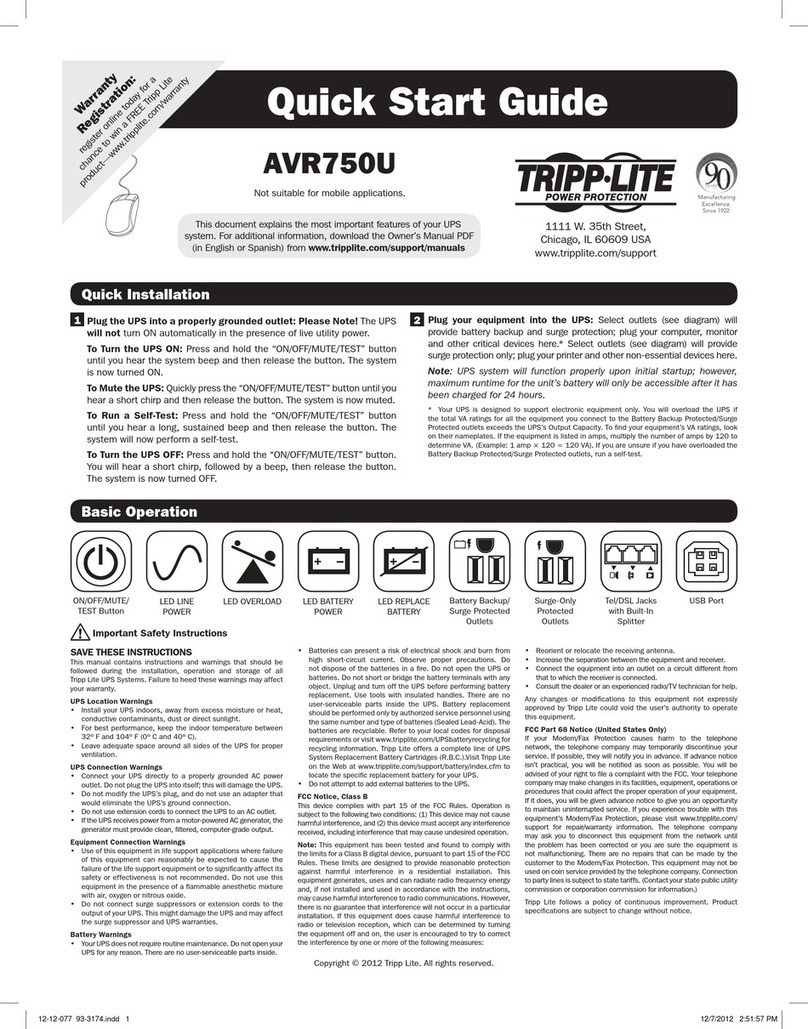
Tripp Lite
Tripp Lite AVR750U quick start guide
